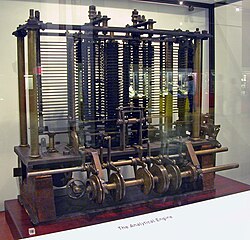
The following is a list and timeline of innovations as well as inventions and discoveries that involved British people or the United Kingdom including the predecessor states before the Treaty of Union in 1707, the Kingdom of England and the Kingdom of Scotland. This list covers, but is not limited to, innovation and invention in the mechanical, electronic, and industrial fields, as well as medicine, military devices and theory, artistic and scientific discovery and innovation, and ideas in religion and ethics.
Contents
- Prehistory
- 14th Century
- 16th Century
- 17th century
- 18th century
- 19th century
- 20th century
- 21st century
- Ceramics
- Clock making
- Clothing manufacturing
- Communications
- Computing
- Engineering
- Household appliances
- Ideas, religion and ethics
- Industrial processes
- Medicine
- Military
- Mining
- Musical instruments
- Photography
- Publishing firsts
- Science
- Astronomy
- Biology
- Chemistry
- Sport
- Transport
- Aviation
- Railways
- Roads
- Sea
- Scientific innovations
- Miscellaneous
- See also
- References
- Further reading
Factors that historians note spurred innovation and discovery include the 17th century Scientific Revolution and the 18th/19th century Industrial Revolution. [1] [2] Another possible influence is the British patent system which had medieval origins and was codified with the Patent Law Amendment Act 1852 (15 & 16 Vict. c. 83). [3]





